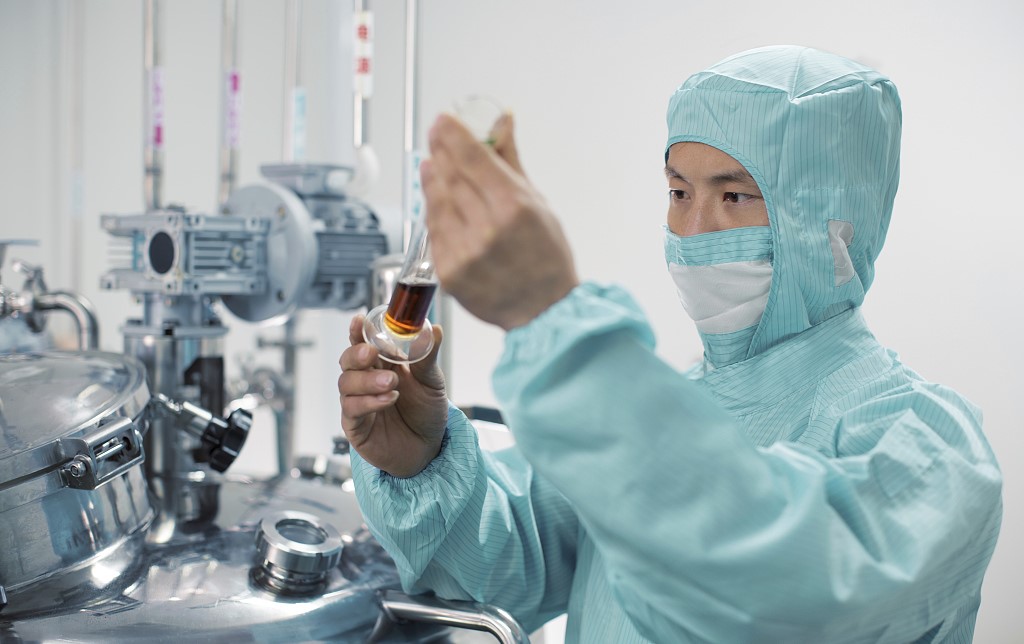扫一扫 添加小助手
服务热线
13818320332
扫一扫 关注我们
 尘埃粒子计数器是用于测量洁净环境中单位体积内尘埃粒子数和粒径分布的仪器。它可广泛应用于为各省市药检所、血液中心、防疫站、疾控中心、质量监督所等权威机构、电子行业、制药车间、半导体、光学或精密机械加工、塑胶、喷漆、医院、环保、检验所等生产企业和科研部门。
尘埃粒子计数器是用于测量洁净环境中单位体积内尘埃粒子数和粒径分布的仪器。它可广泛应用于为各省市药检所、血液中心、防疫站、疾控中心、质量监督所等权威机构、电子行业、制药车间、半导体、光学或精密机械加工、塑胶、喷漆、医院、环保、检验所等生产企业和科研部门。
10.0 Risk assessment and Management
风险评估和管理
Quality Risk Management (QRM) is a readily applied and logical process that iseffectively used to support the planning and strategy for maintaining a system or a process under continuous quality oversight. The many benefits of a quality risk management process include, but are not limited to:
Improved planning and preparation to prevent potential failures
Increased understanding of the critical aspects of systems, processes and products
Improved stakeholder relationships through better communication
Increased levels of assurance through documentation of the decision-making process
Reduced risk to patients by modifying processes to eliminate or reduce risk
Improved detectability of fault conditions
Optimization and prioritization of qualification efforts and resources
Selection of test methods and acceptance criteria which are aligned with critical quality attributes of products
Compliance with regulatory requirements or expectations
Assistance in maintaining processes in a state of control
质量风险管理(QRM)是一个便于应用且合理的流程,它能有效地支持计划和策略,使系统或工艺维持在连续的质量监督下。质量风险管理有许多优点,但不局限于以下几点:
改进计划、预防潜在失误
增进对系统、工艺和产品关键方面的理解
通过更好的沟通改善利益双方关系
通过对决策流程的记录提高保障水平
通过改进工艺消除或减少风险,降低给患者带来的风险
提高故障检测性
优化验证资源
选择检测方法和可接受标准,同产品关键质量属性一致
符合法规要求或期望
使工艺维持在受控状态
The role of risk management is integral to the design and validation strategy for manufacturing systems. Risk management is a continuous process. Key inputs and data are analyzed and evaluated, and risk mitigation measures are implemented to ensure the outputs of the design are appropriately considered and verified, and that the subject system is demonstrated as fit for purpose. Cleaning and cleaning validation requirements are determined from inputs related to the knowledge of process systems, soils and equipment cleaning aids (e.g., chemical and mechanical features). These requirements are subject to a design review and then verified in accordance with the acceptance criteria that are used to prove that the system requirements have been achieved.
Product knowledge, process knowledge, regulations and quality attributes are used to develop the requirements for cleaning and to define the technologies that will best support the cleaning of manufacturing systems and components. Issues that may impact cleaning include: soil type, cleaning process, equipment design and configuration and availability of utility services. Process knowledge is used to determine CPPs and define CQAs. Examples of each are presented in Table 10.1 below.
Table 10.1 CPP and CQA Considerations that have Potential Risk Impact to a Cleaning Process
风险管理贯穿于生产系统整个设计和验证策略。风险管理是一个连续的过程。分析和评估关键的投料量和数据,采取风险缓解措施确保设计合理有效,证明目标系统符合预期用途。清洁和清洁验证要求由工艺系统、脏物和设备清洁相关(如化学和机械特性)的知识来确定。这些要求要通过设计审核,然后证实符合可接受标准,该可接受标准用于证明系统要求已经达
根据产品知识、工艺知识、法规和质量属性确定清洁要求,规定能够最好支持清洁生产系统和组分的方法。可能影响清洁的问题包括:脏物类型、清洁程序、设备设计、配置和现有的公共服务工艺方面的知识用于确定CPPs和定义CQAs。例子见下表10.1.
Table 10.1 CPP and CQA Considerations that have Potential Risk Impact to a Cleaning Process
表10.1 对清洁程序有潜在风险影响的CPP和CQA
Critical process parameters
关键工艺参数
Criticai Quality Attributes
关键质量属性
工艺温度
工艺压力
工艺流程
工艺时间
清洁剂浓度
脏东西保持时间(赃物情况)
清洁保持情况
目测或限度
清洁剂残留
产品残留
微生物残留限度
滤水性/干燥
电导率/电阻率
QRM involves elements of risk assessment, risk control and periodic review to ensure continuous andagement process is best supported by a team of Subject Matter Experts that have an appropriate level of experience from various areas such as operations, technical services, engineering, quality control, quality assurance and regulatory. The experience and diversity of the team provides the opportunityto identify and address all conditions that impact CPP and CQA for the cleaning or manufacturing process.
QRM涉及风险评估、风险控制和定期审核,从而保证连续和有效的控制。质量风险管理流程最好由来自各个领域的,如生产、技术、工程、质量控制、质量保证和药政,有一定经验的主题专家组来构建。专家组成员的经验和多元化有助于鉴定和说明清洁或生产过程中影响CPP和CQA的所有情况。
10.2Techniques and Tools for Risk Management and Assessment
10.2 风险管理和评估的方法及工具
Techniques and tools for risk management include process mapping, brainstorming, Hazard Analysis and HACCP, FTA, Cause and Effect Analysis, HAZOP, and FMEA. Risk assessment is initiated early in the life cycle process starting in the planning, development and specification phases of the cleaning process. Risk evaluations are performed periodically. Feedback data is used to make decisions that impact the cleaning process.
风险管理的方法和工具包括过程分析、集体讨论、危害分析、HACCP(危害分析和关键环节控制点)、FTA(故障树分析)、因果分析、HAZOP(危险与可操作性分析)和FMEA(失效模式影响分析)。风险评估开始于清洁程序整个生命周期的初期阶段,从清洁程序的计划、发展和标准建立阶段开始。反馈数据用于对受影响的清洁程序做出决定。
Risk analysis is integral to the change management process. The impact of a proposed change is evaluated for quality and safety impacts, and the outcome of the assessment is used to drive the activities that are required to effectively implement the change. Low-risk change tasks (such as an increase in rinsing time) may require little to no additional testing. High-risk change tasks (such as a change in the nature of the cleaning solution) may require a significant level of testing. Risk analysis can also be used to determine the economic impact of a change. It may become evident that a proposed change offers no economic benefit; consequently the change is not implemented.
风险分析是变更控制不可或缺的一部分。变更要评估对质量和安全的影响,评估结果有助于变更的有效执行。低风险变更(如延长清洗时间)可能不需要额外检测。高风险变更(如清洗方法本质改变)可能需要相应程度的检测。风险分析也能用于确定变更对经济方面的影响。一个变更有可能很明显不会带来经济效益,因此不会执行该变更。
In summary, quality risk management is a systematic process that involves elements of assessments, development of controls and continuous review throughout the life cycle of the cleaning process. The risk assessment process is effective at identifying CPPs and CQAs. Risk management tools are used to generate data and drive decisions. This information is used to affect risk mitigation, and it reduces risk to an acceptable level. Risk assessments should be documented so that critical factors are identified, decision pathways are understood, and the information is effectively communicated to the stakeholders.
总而言之,质量风险管理是一个系统的流程,涉及清洁程序整个生命周期的评估、控制开发和连续审核。风险评估能有限鉴别CPPs和CQAs。风险管理工具用于生成数据和做出决策。这些信息会影响风险缓解,降低风险的可接受水平。应当记录风险评估,以便识别关键因素、了解决策思路和使信息有效的传达给利益相关者。
总而言之,质量风险管理是一个系统的流程,涉及清洁程序整个生命周期的评估、控制开发和连续审核。风险评估能有限鉴别CPPs和CQAs。风险管理工具用于生成数据和做出决策。这些信息会影响风险缓解,降低风险的可接受水平。应当记录风险评估,以便识别关键因素、了解决策思路和使信息有效的传达给利益相关者。
文章来源:允咨生物GMP学苑
本网站刊载的所有内容,包括文字、图片、音频、视频、软件等,如非标注为“原创”,则相关版权归原作者所有,如原作者不愿意在本网站刊登相关内容,请及时通知本站,我们将第一时间予以删除。